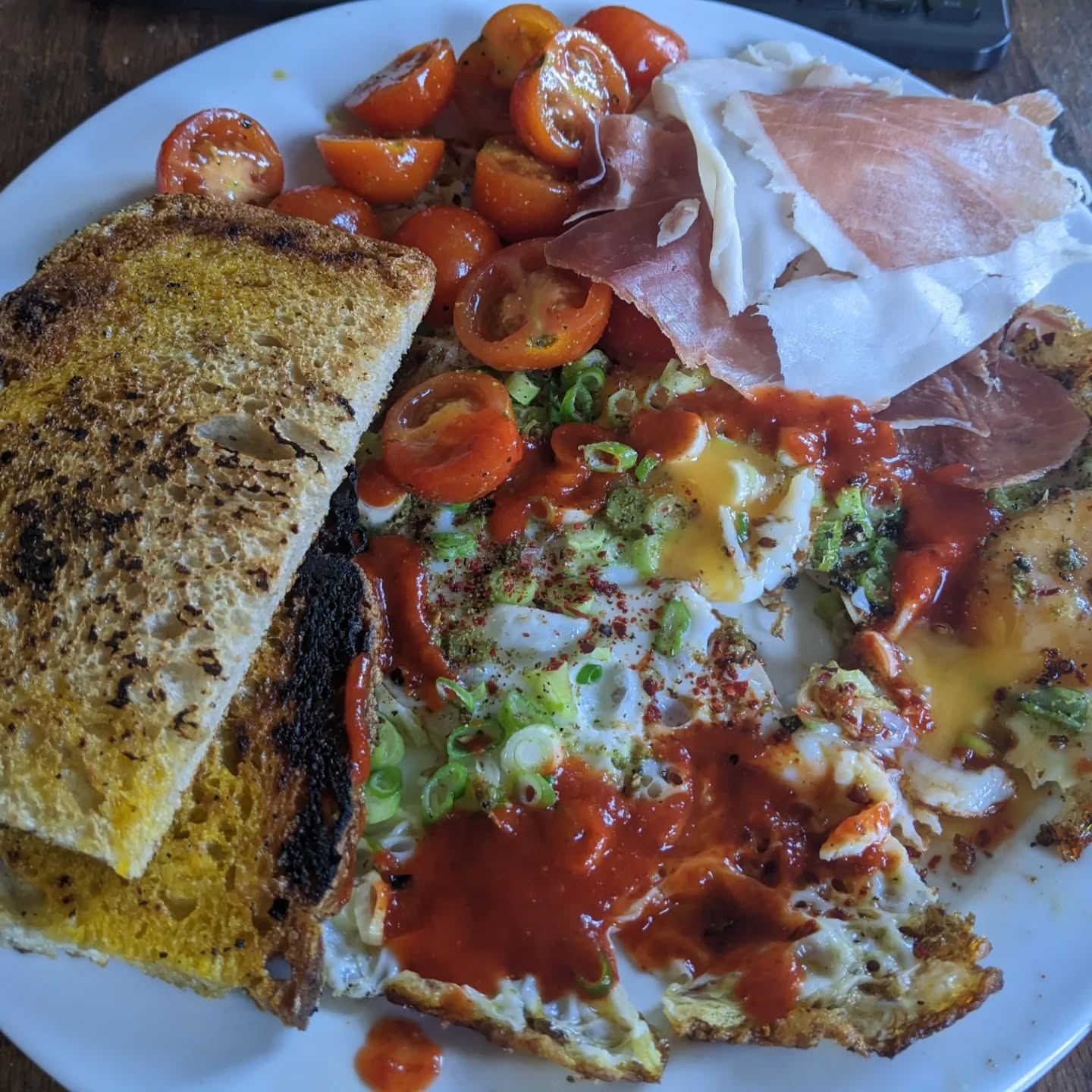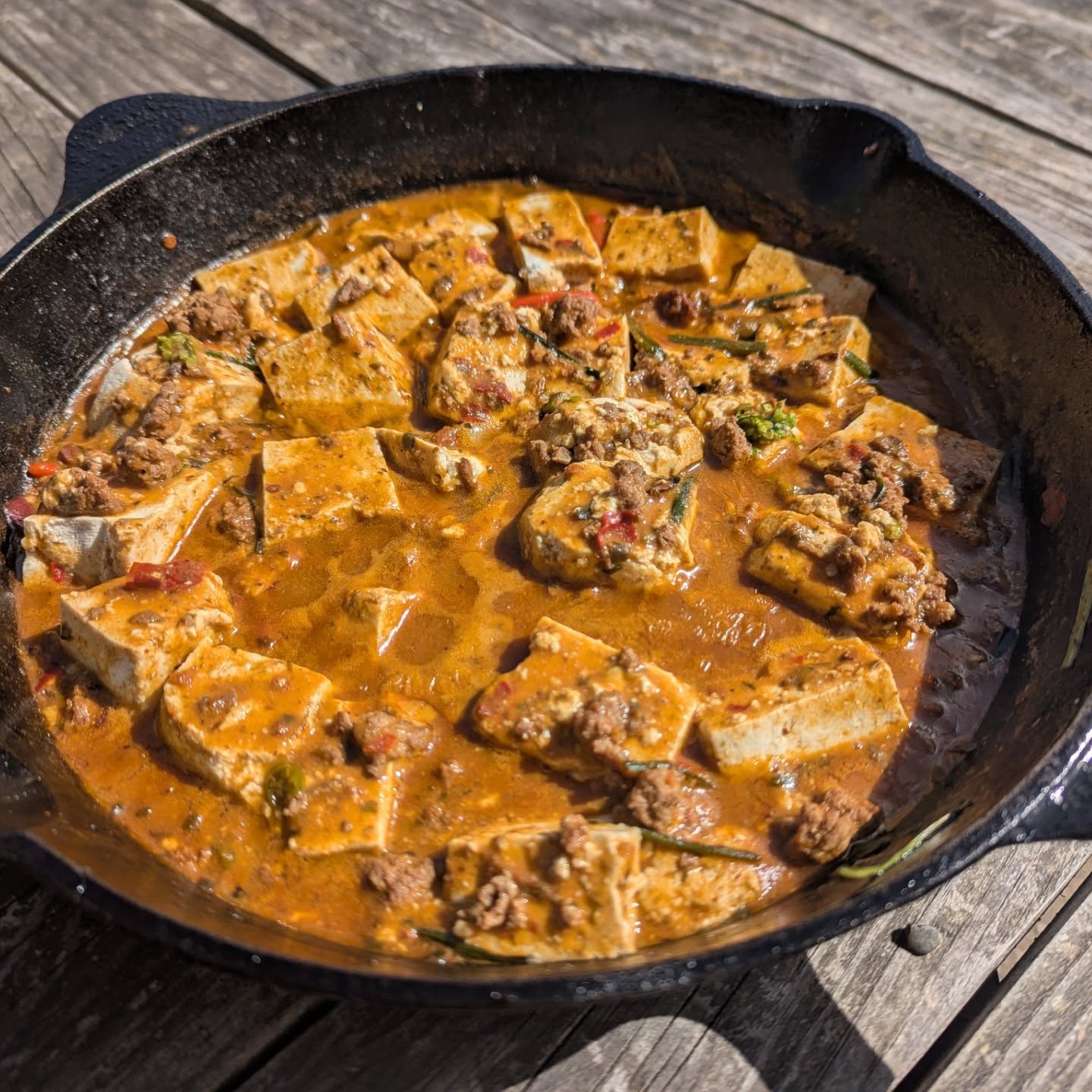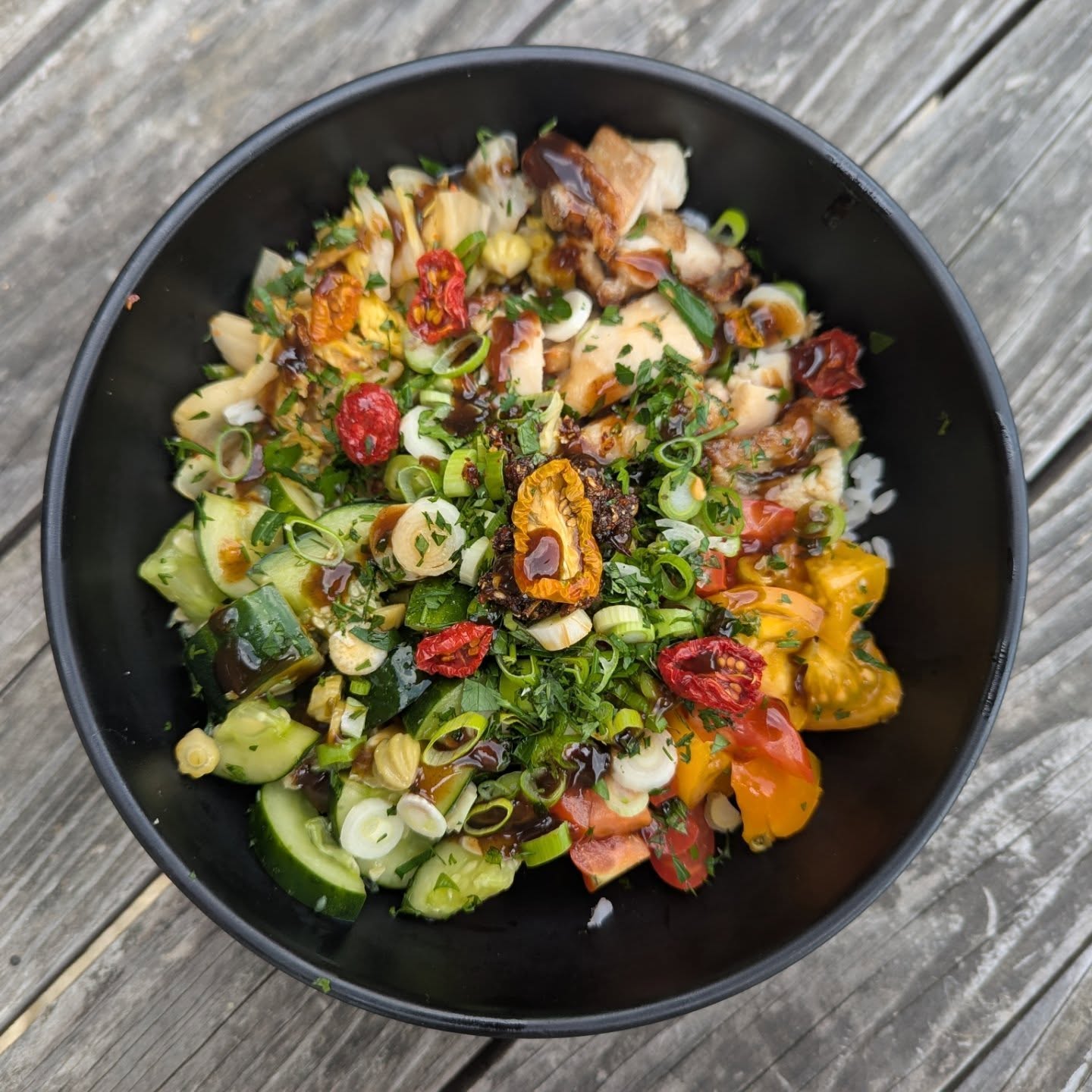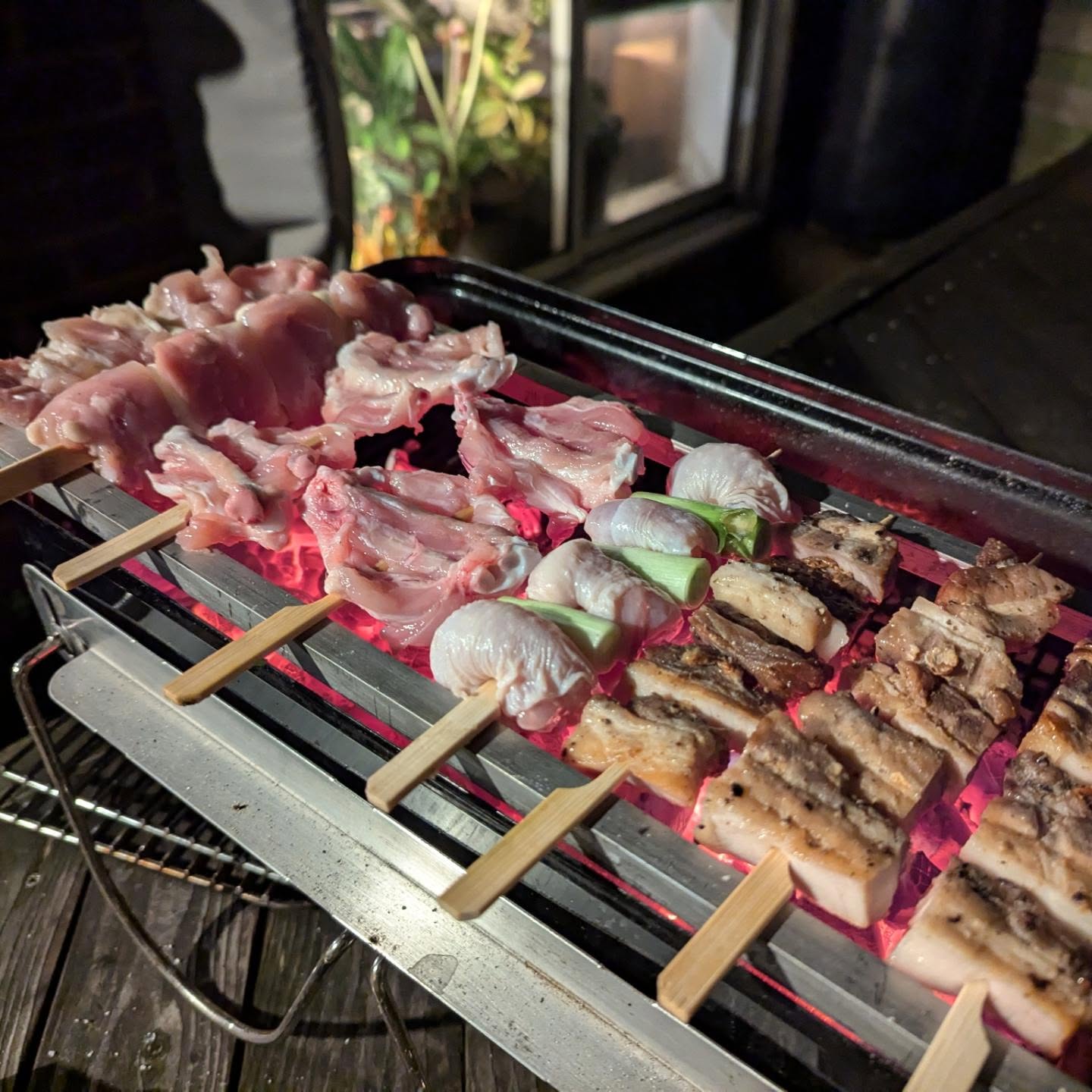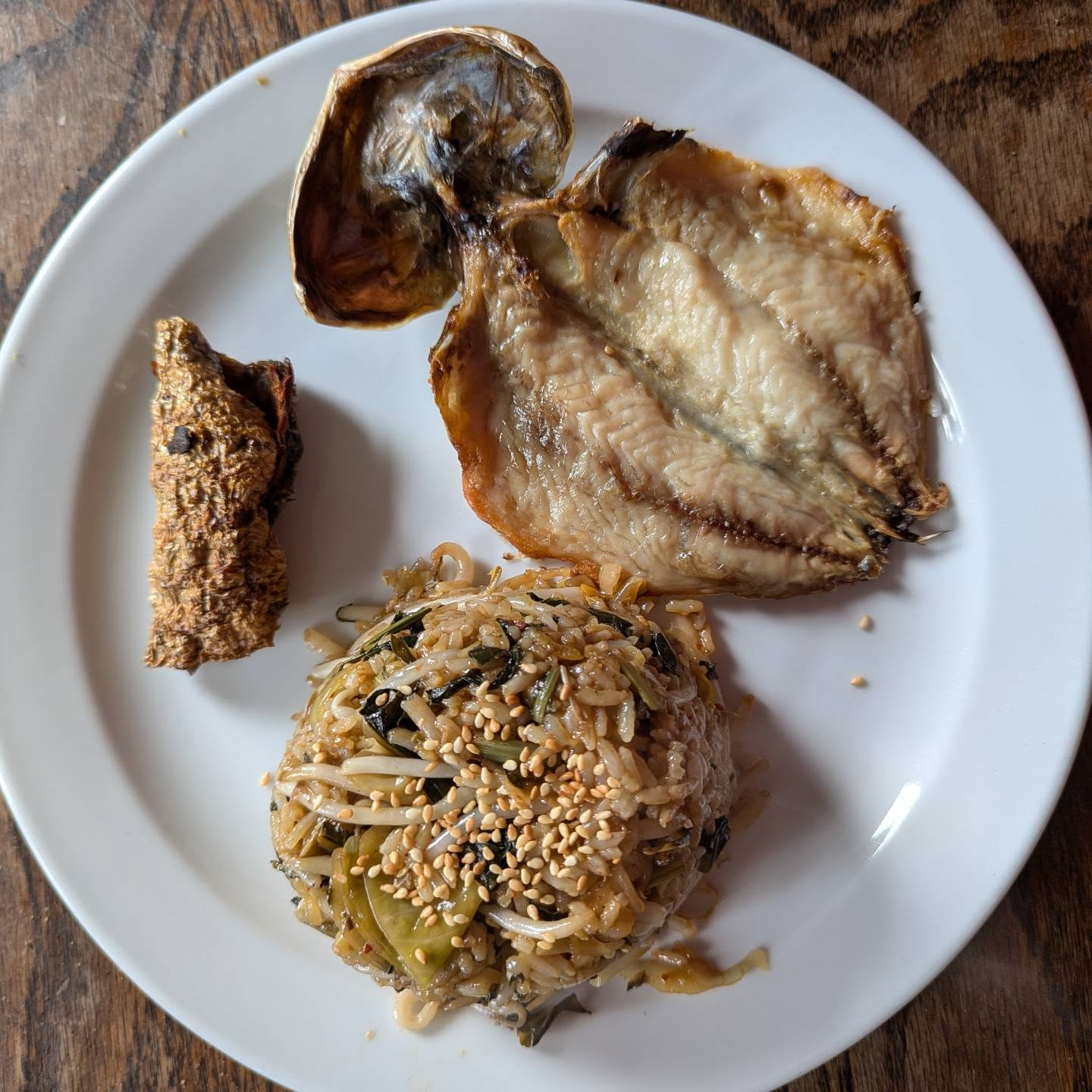· James Torr · Personal · 1 min read
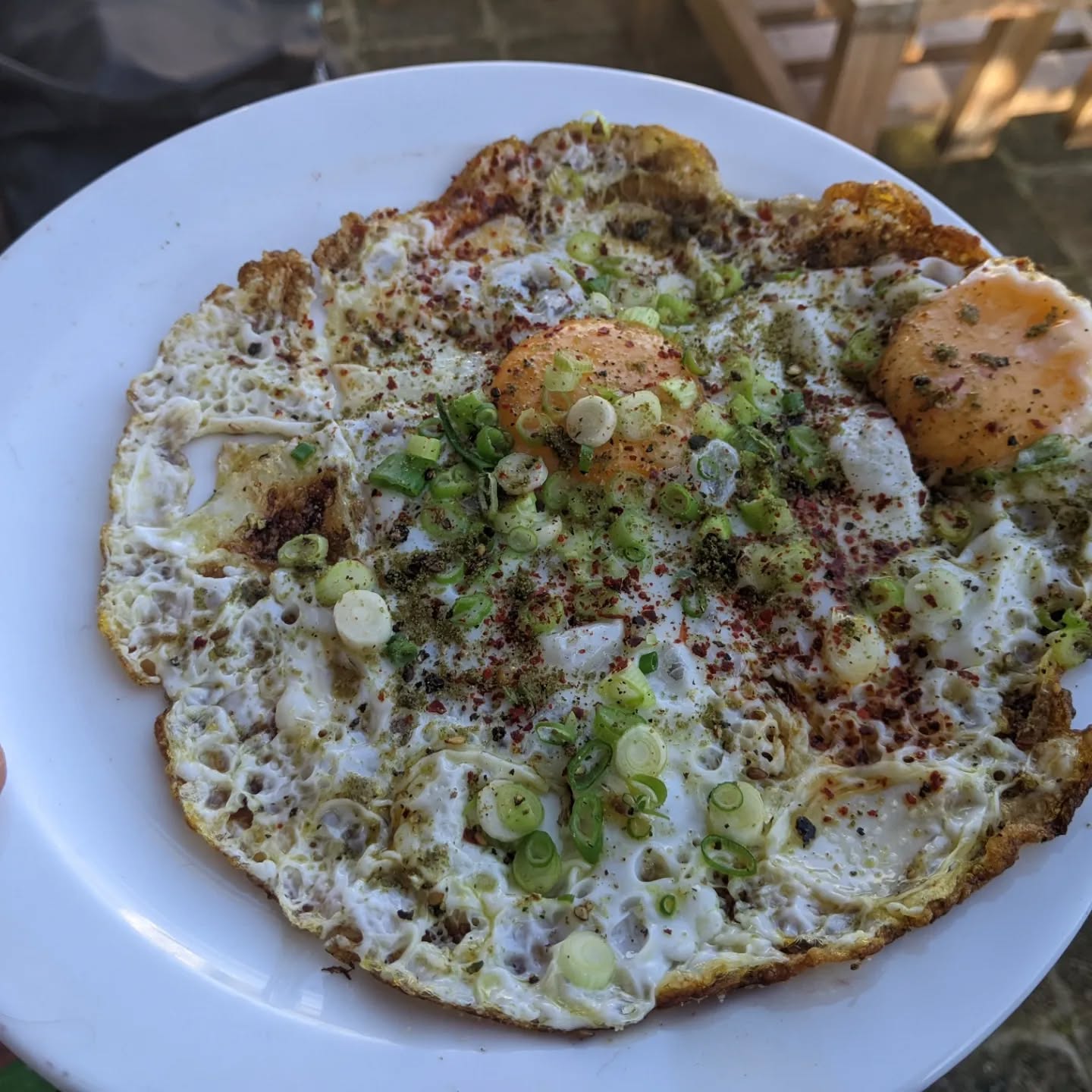
This is my new favourite way of preparing eggs.
This is my new favourite way of preparing eggs. @frankprisinzano’s method. I hope I have done it some justice.
It is super simple and a lovely combination of textures, and relies on it being hot enough to crisp up, something a lot of home chefs seem to be afraid of.
Heat up a stainless pan for 3-4mins, check its hot enough with a splash of water - they should bead, and roll across the surface. Crack a couple of eggs into a bowl as the pan is heating up. Add oil to the pan, it should smoke but not burn. 230-250C if you have an IR or probe thermometer. Pour the eggs in the pan and leave them, don’t touch. In about 3-4 mins they should have crisped up on the bottom.
While they’re cooking, add salt, pepper, chilli flakes/powder. I’ve added some thyme blend. When the yolks look cooked, use a fish spatula to remove from the pan.
Served here with slices of home baked bread, tomatoes, prosciutto.

